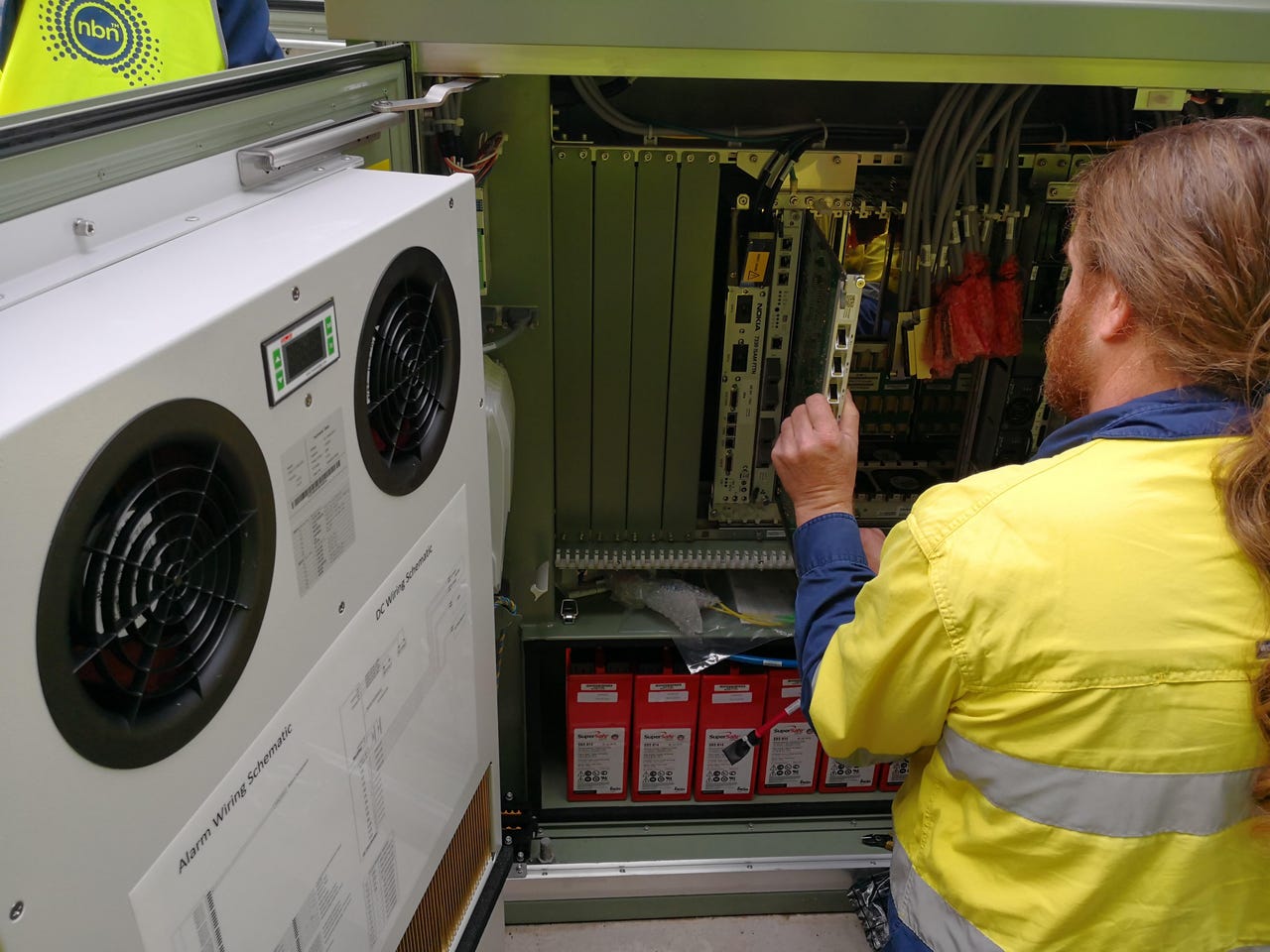Usual suspects return as NBN parts with AU$1.1 billion for FttN upgrades

An NBN FttN node getting a Nokia line card installed
You've heard the names before, and some of the companies involved in constructing the National Broadband Network are back five years later to upgrade the fibre-to-the-node (FttN) parts of the network.
The company responsible for the NBN said on Wednesday it has awarded AU$1.1 billion in contracts to Downer, Fulton Hogan, Lendlease, and Visionstream to take part in its "network evolution plan", or backflip, depending on your point of view.
As announced in September, NBN will spend AU$3 billion to allow users on its FttN network to upgrade to full fibre on an on-demand basis. Users will need to order a 100Mbps or faster plan for the fibre lead-in work to take place.
In total, NBN wants two million premises eligible for the upgrade by 2023 and already started design and construction activity for 200,000 of them at the end of 2020. The contracts announced on Wednesday cover the remaining 1.8 million.
"It is expected these new contracts will lead to the creation of up to 10,000 jobs during the peak design and construction period of NBN Co's network investment plan," the company said.
"A range of roles in the design and construction industry are expected to be required, including telecommunication technicians, fibre haulers and splicers, civil construction workers, engineers, designers, safety inspectors, project managers and more."
NBN said it would have a "small-scale launch" to allow the first orders to take place by the end of 2021, and was also planning for the similar fibre-to-the-curb (FttC) upgrade program.
In November, NBN CEO Stephen Rue said the full fibre model was cheaper for FttN upgrades than going to FttC, due to the latter requiring a distribution point unit (DPU) to service up to four homes, with the cost of the unit being spread across homes connected to it. But if one home is all that connects, it does not remain cheaper.
"When we when we look at an on-demand model, fibre to the premise is more cost-effective because you simply don't know if your neighbours are also going to sign up," Rue said.
"If you're upgrading ... one individual home, fibre to the premise will then be cheaper, but obviously if you then end up doing three, it's more expensive."
Rue added that across the FttC footprint, most distribution points, on average, service approximately 3.1 premises.
Chief operations officer Kathrine Dyer added it was often the case that when placing a DPU into a pit, the pit also needed remediation.
In May, Rue explained why NBN Co decided to reverse its previous plans to use G.fast on FttC connections for speeds higher than 250Mbps, and instead shifted to full fibre upgrades.
"If we're going to provide higher speeds beyond 100Mbps to people, we wanted to look at the long-term, the 15-year roadmap if you like," he told Senate Estimates at the time.
"When we looked at it, we took the view that we're using G-Fast, there would still be things like copper remediation, there may be still some home wiring in the home, and it was also going to be IT system builds for us and the retailers, and a harder thing for retailers to manage because they'd have to explain what service they were getting.
"So we concluded that the best return on investment for those customers who wanted more than a 100Mbps was to provide a fibre lead-in."
The same month, NBN revealed having replaced approximately 47,700 NBN Co Connection Devices used on FttC lines, with New South Wales having the largest impact due to lightning and floods.
Related Coverage
- NBN invites all governments to participate in AU$300m regional co-investment fund
- NBN floats options for killing off CVC charges
- Better long-term ROI pushed NBN to replace G.Fast FttC with full fibre lead-ins
- NSW lightning and floods punish NBN FttC connection devices
- NBN residential ARPU remains stuck at AU$45
- NBN looking at FttC upgrade to fibre if users want 250Mbps
- NBN nixes dark fibre talks as subcontractors protest pyramid contract model
